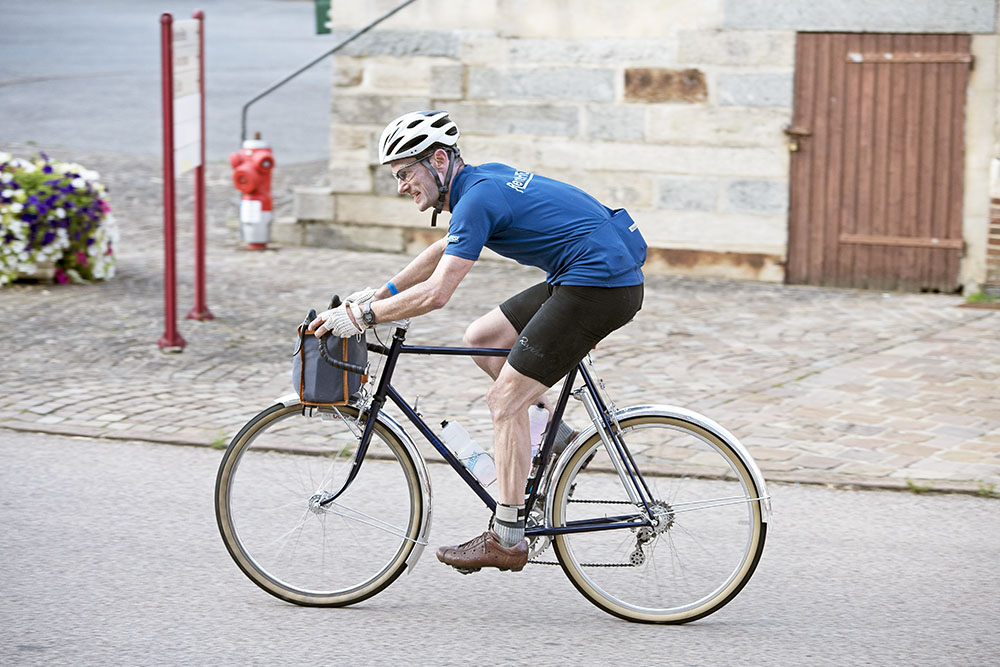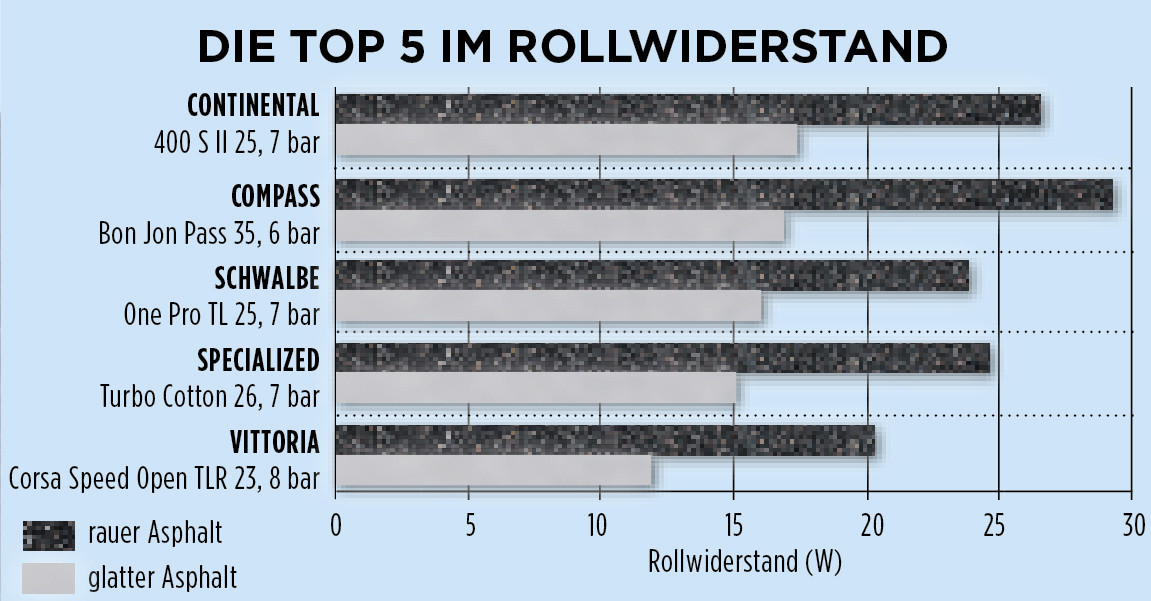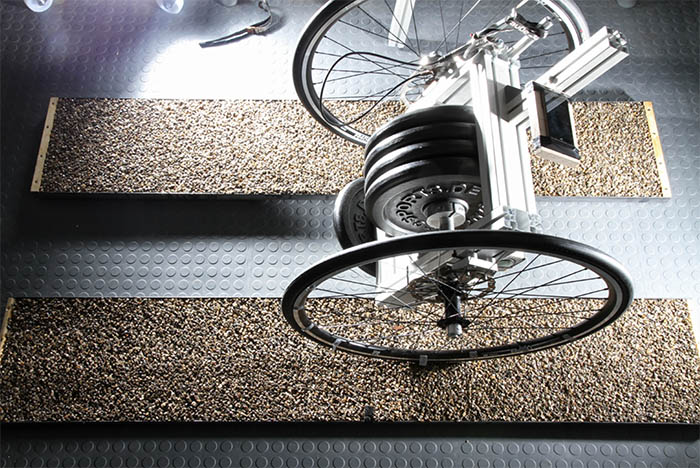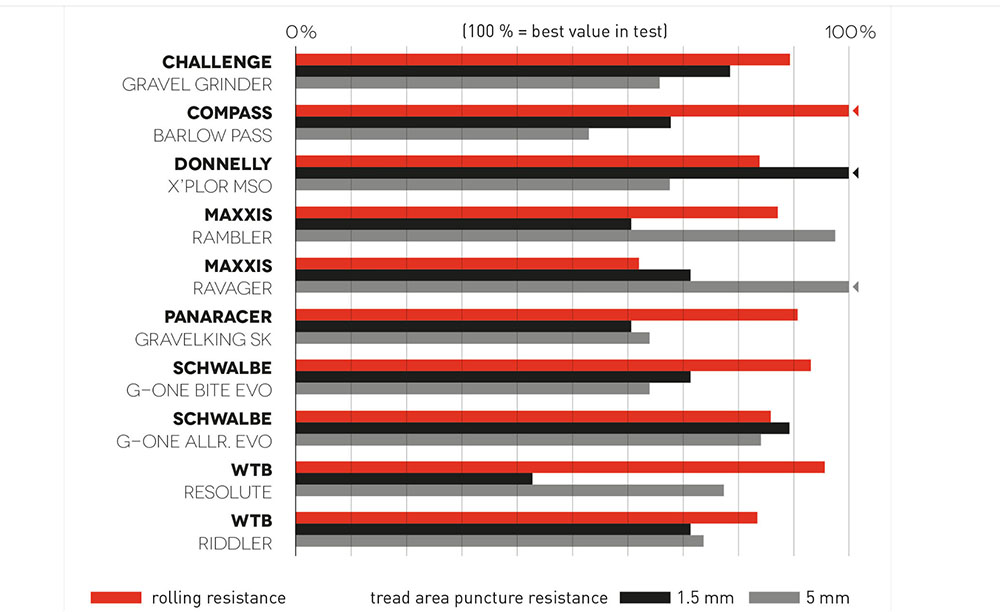How Fast are Rene Herse Tires?

How fast are our tires? We know that the casing, and not the width, determines a tire’s speed. When I rode Paris-Brest-Paris on 42 mm-wide tires (above), I knew that I wasn’t giving up any speed over narrower rubber. But in absolute terms, how fast are our Rene Herse tires?
Manufacturers’ claims always are taken with a grain of salt… So let’s look at two independent tests of our tires. They still list the old ‘Compass’ name, but the tires tested were the same as the current Rene Herse models.

The respected German magazine TOUR found our Bon Jon Pass as one of the five fastest tires they’ve ever tested. TOUR tested the Standard model. The more supple and speedy Extralight would have fared even better.
TOUR also inflated the Bon Jon’s lower than the other tires. Without a rider – and without suspension losses – lower pressure makes a tire slower, so the test would have been better if all tires had been run at the same pressure. (In the real world, with a rider on the bike, higher pressures increase suspension losses, which cancels the benefit of the lower hysteretic losses.)

TOUR’s test rig is a pendulum that rolls the tires back and forth. The longer the pendulum swings, the lower the rolling resistance.
Like all tests that don’t include a rider, this test measures only losses due to deformation of the tire (hysteretic losses). In the real world, there are also suspension losses as vibrations are absorbed by the bike and the rider. Wide tires vibrate less than narrow ones, so they tend to roll even faster than these tests suggest.
In any case, the result is clear: In TOUR’s test, the Bon Jon Pass is one of the fastest tires in the world, closely matching the best racing tires. Being 9-12 mm wider than the racing tires doesn’t make the Bon Jon Pass any slower.
How about comparing our tires to other wide tires? Gran Fondo magazine recently tested ten popular gravel tires. Rolling resistance (and puncture resistance) were tested by Schwalbe’s engineers in the company’s test lab.

Our Barlow Pass Extralight had the lowest rolling resistance (red bar) of all tires in the test. (100% is the best in the test.) Again, this test doesn’t show the full advantage of a supple tire. Without a rider, the benefits of the lower suspension losses don’t come into play, and on a (convex) steel drum, supple tires deform more than they do on real (flat) roads. But still – it’s an indication that our casings are more supple and absorb less energy than others.
The engineers at TOUR and Schwalbe are among the most respected in the cycling world. Their tests show that our casings are among the most supple, and roll as fast or faster than the best tires in the world.
On real roads, the advantage of supple tires is even greater: Not only do they absorb less energy as they flex, they also vibrate less. And that reduces the suspension losses. Both effects work in tandem: Supple tires have less tire deformation and less vibration. As a result, the greater speed of supple, wide tires becomes very noticeable when you ride on real roads. When you try different tires back-to-back, you realize that tires are the biggest performance upgrade you can make to your bike.

A little more about the Gran Fondo test: The testers were impressed by the “superb levels of comfort” of the Barlow Pass and called it “almost as nice as flying.” They also were surprised how much grip the supple tires offered on gravel and dry dirt roads. Of course, reading that makes us happy, even if it just confirms what we’ve found in our own testing.
Further reading:


